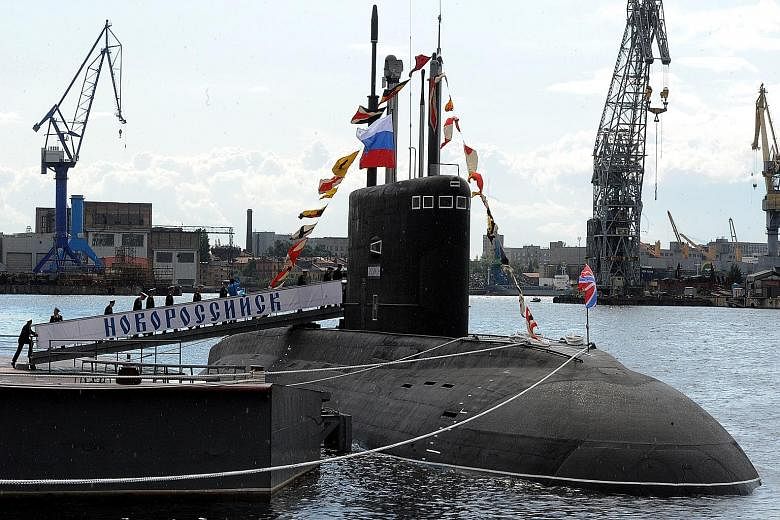WASHINGTON • Russian submarines and spy ships are operating aggressively near vital undersea cables that carry almost all global Internet communications, raising concerns among some United States military and intelligence officials that Russia might be planning to attack those lines in times of tension or conflict.
The issue goes beyond old worries during the Cold War that the Russians would tap into the cables - a task US intelligence agencies also mastered decades ago. The alarm today is deeper: The ultimate Russian hack on the US could involve severing the fibre-optic cables to halt the instant communications on which the West's governments, economies and citizens are dependent.
While there is no evidence yet of any cable cutting, the concern is part of a growing wariness over the accelerated activity by Russian armed forces around the globe.
At the same time, the internal debate in Washington illustrates how the US is increasingly viewing every Russian move through a lens of deep distrust, reminiscent of relations during the Cold War.
Commander William Marks, a US Navy spokesman, said: "It would be a concern to hear any country was tampering with communication cables. However, due to the classified nature of submarine operations, we do not discuss specifics."
In private, however, commanders and intelligence officials are far more direct. They report that from the North Sea to North-east Asia and even closer to US shores, they are monitoring significantly increased Russian activity along the known routes of the cables, which carry the lifeblood of global electronic communications and commerce. They carry more than US$10 trillion (S$13.9 trillion) a day in global business, including from financial institutions that settle their transactions on them every second.
Just last month, Russian spy ship Yantar, equipped with two self-propelled deep-sea submersible craft, cruised slowly off the East Coast of the US on its way to Cuba - where one major cable lands near the US naval station at Guantanamo Bay.
Navy officials said the Yantar and the submersible vehicles have the capability to cut cables miles down in the sea. Russian officials insist Yantar is an oceanographic ship with no ties to espionage.
"The Yantar is equipped with a unique on-board scientific research complex which enables it to collect data on the ocean environment, both in motion and on hold," said Mr Alexei Burilichev, head of deep-water research at the Russian Defence Ministry, according to sputniknews.com this year.
Norway is so concerned that it has asked its neighbours for aid in tracking Russian submarines.
Admiral James Stavridis, formerly Nato's top military commander and now dean of the Fletcher School of Law and Diplomacy at Tufts University in Massachusetts, said last week that "this is yet another example of a highly assertive and aggressive regime seemingly reaching backwards for the tools of the Cold War, albeit with a high degree of technical improvement".
"The risk here is that any country could cause damage to the system and do it in a way that is completely covert, without having a warship with cable-cutting equipment right in the area," said Mr Michael Sechrist, a former project manager for a Harvard-MIT research project funded in part by the US Defence Department. "Cables get cut all the time - by anchors that are dragged, by natural disasters."
But most of those cuts are a few miles from shore, and can be repaired in a matter of days. What worries the Pentagon is that the Russians appear to be looking for vulnerabilities at greater depths, where cables are hard to monitor and breaks are hard to find and repair.
Mr Sechrist noted that the locations of the cables are hardly secret.
"Undersea cables tend to follow the similar path since they were laid in the 1860s," he said, because the operators want them in familiar environments under longstanding agreements. The exception are special cables, with secret locations, commissioned by the US for military use; it is possible the Russians are hunting for those, officials said.
NEW YORK TIMES

